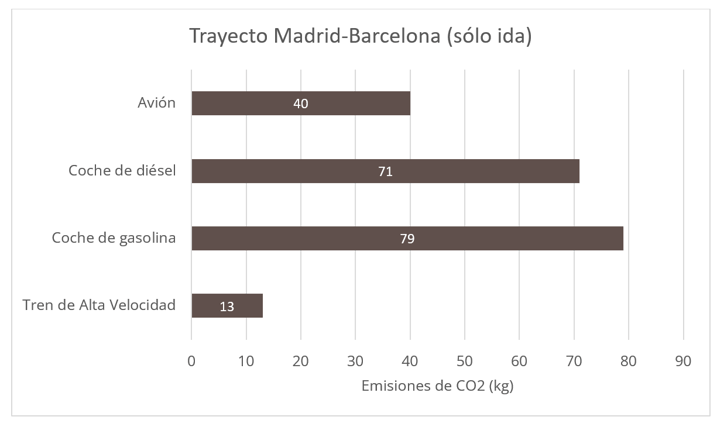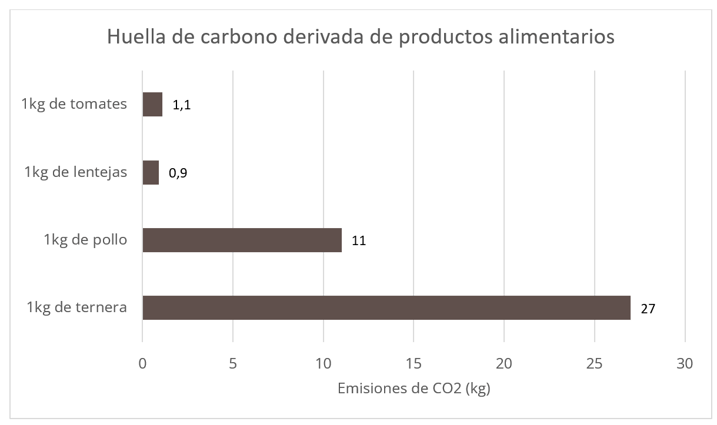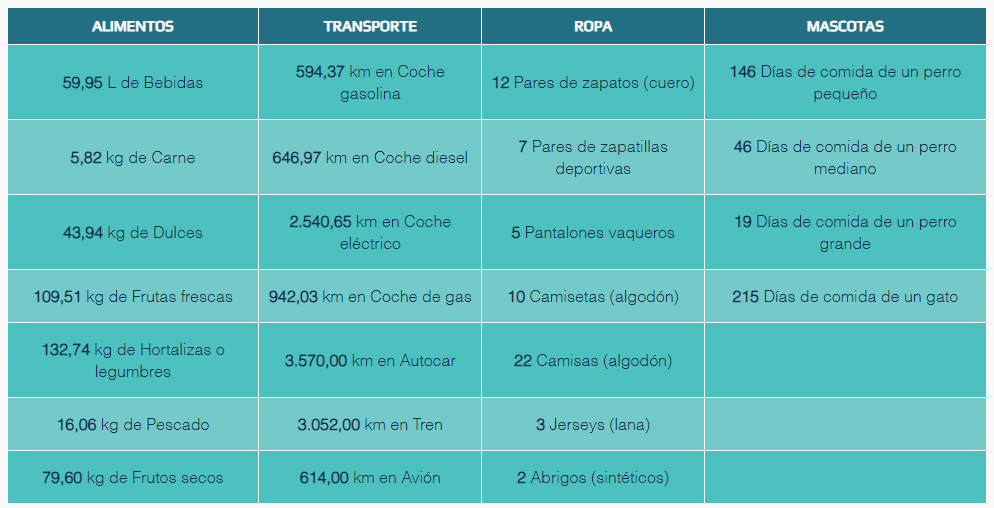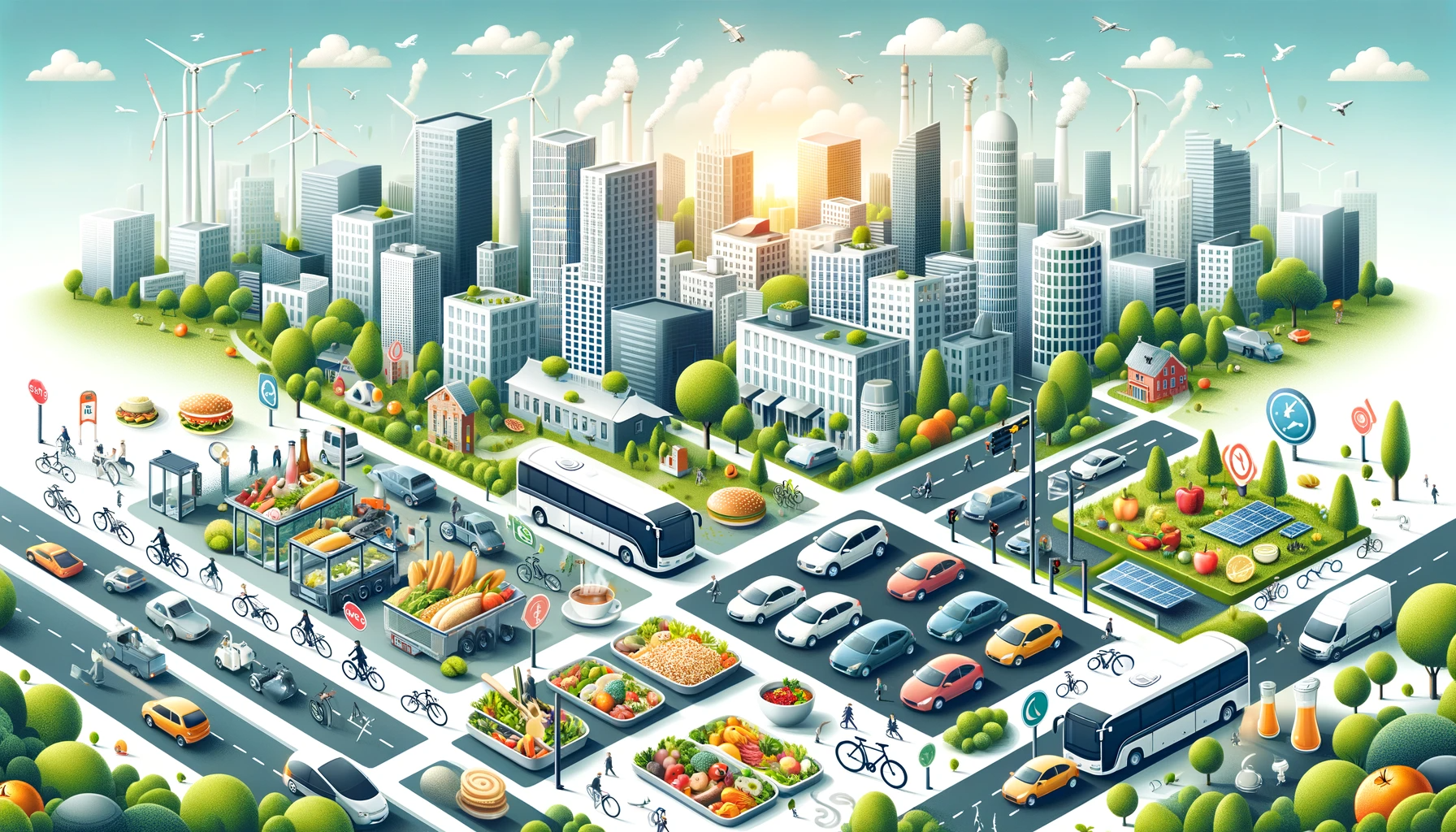Our daily actions, such as showering, cooking, or commuting to work, have an impact on the environment through the carbon emissions they generate, which usually go unnoticed. It is crucial to understand this impact to become aware of the carbon footprint we leave in our daily lives.
The daily carbon footprint represents the total amount of CO2 emissions derived from our daily activities, which contribute to climate change and global warming. This footprint should also quantify the emissions during the entire life cycle of each product.
This article aims to raise awareness of the importance of reducing our personal carbon footprint by quantifying the environmental impact of common actions that often go unnoticed.
Transport: How much pollution is caused by travelling by plane, car, or train?
In Spain, the transport sector is responsible for 26% of the greenhouse gas emissions, including CO2 and other gases1. For this reason, choosing our daily and leisure transportation modes, such as vacations, directly influences our carbon footprint and the environment. Let's see the quantified emissions generated by the main means of transportation.
- Travelling by plane:
- A Barcelona - Rome return flight (1h 45' flight time) produces 158 kg of CO2 per passenger.
- A Barcelona - Paris return flight (2h flight time) produces 153 kg of CO2 per passenger.
- A Barcelona - New York return flight (9h flight time) produces 917 kg of CO2 per passenger. As we can see, the amount skyrockets on transatlantic flights.
- Travelling by high-speed train:
The high-speed train (AVE in the case of Spain) is one of the most sustainable transportation options within the country.
- A one-way Madrid-Barcelona journey by AVE (615 km) produces 13 kg of CO2 per passenger. 3
- Travelling by car:
The private car option is one of the most commonly used, although it is not the most sustainable option. Although the carbon footprint derived from its use is shared among the vehicle's passengers, both petrol-powered cars and those that use diesel fuel involve high carbon emissions.
- A Madrid - Barcelona journey (615 km) by petrol car emits a total of 79 kg CO2.4
- A Madrid - Barcelona journey (615 km) by diesel car emits a total of 71 kg of CO2.

As we can see in the graph, the means of transport that involves the most CO2 emissions is the car, both petrol and diesel. This data is due to the fact that it has been counted that there is only one passenger in the car, so the entire carbon footprint is divided by only 1. In the case of the plane and the train, it is divided among all the passengers. We can conclude that in these cases, rail transport is the most sustainable.
Even so, in the case of intercity transport, the most sustainable options by far (since they do not generate carbon emissions) are walking and using the bicycle. Sustainable urbanism must facilitate the efficiency of cities in promoting these means of transport.
Carbon emissions in food
The food we eat and where it comes from also has a direct impact on the carbon footprint we generate. We quantified some of the most common foods to illustrate:
- 1 kg of beef emits 27kg of CO2. 5
- 1 kg of chicken meat emits 11 kg of CO2. 6
- 1 kg of local lentils emits 0.9kg of CO2. 7
- 1 kg of locally sourced tomatoes: Emits 1.1kg of CO2. 8

In this case, some recommendations to reduce our environmental impact when it comes to eating are to choose to buy local, non-imported food and to reduce meat consumption.
Carbon emissions derived from housing use
How we live and the use we make of our home is also important when it comes to quantifying our carbon footprint. Phantom consumption is an important type of consumption that we do not normally take into account, but which generates carbon emissions. It's about having devices connected, but without having them turned on.
- A 10-minute hot shower generates 2kg of CO2. 9 This quantity depends on the duration, the flow rate and the system that heats the water. The best option to reduce these emissions is by shortening shower time and turning off the water when not needed.
- On average, heating a house generates 7kg of CO2. 10 The approximate annual electricity consumption is 3,790kWh, which is equivalent to 940kg of CO2. 11
More examples: 100kg of CO2 is equivalent to...
The carbon footprint observatory, driven by the Chair of Environmental Ethics at the University of Alcalá, features a calculator and other useful data in the study of the carbon footprint of daily actions.
An interesting chart shows the equivalence of 100 kg of CO2 in various everyday activities, from food to caring for our pets.

Source: Carbon Footprint Observatory
Conclusion and summary table
The carbon footprint generated by our daily actions has a significant impact on climate change. Reducing our CO2 emissions is essential to mitigate global warming. Opting for more sustainable means of transportation, local foods, and energy efficiency at home are crucial steps towards a more environmentally friendly lifestyle.
| Action or element (ascending order) | CO2 emissions (kg) | |
| 1 | 1 kg of lentils | 0.9 |
| 2 | 1 kg of tomatoes | 1.1 |
| 3 | 10-minute shower | 2 |
| 4 | Heating a home | 7 |
| 5 | 1 kg of chicken meat | 11 |
| 6 | AVE Madrid - Barcelona | 13 |
| 7 | 1 kg of veal | 27 |
| 8 | Diesel car Madrid - Barcelona | 71 |
| 9 | Petrol car Madrid - Barcelona | 79 |
| 10 | Flight Barcelona - Paris | 153 |
| 11 | Flight Barcelona - Rome | 158 |
| 12 | Flight Barcelona - New York | 917 |
Sources of information
1 The Guardian: How your flight emits as much CO2 as many people do in a year
3 Truecalia: The AVE trains are among the means of transport that pollute the least
4 Michelin Guide: Detailed calculation of travel cost
5 8 Billion Trees: Carbon Footprint of meat calculator
6 8 Billion Trees: Carbon Footprint of meat calculator
7 Bioguide: What are the foods with the highest and lowest carbon footprint
8 Bioguide: What are the foods with the highest and lowest carbon footprint
9 Clever Carbon: A day in the life
10 Clever Carbon: A day in the life
11 CO2 Web Online Observatory: Household Appliances


